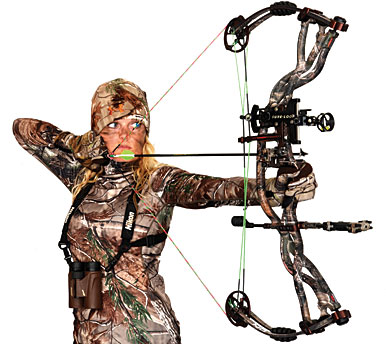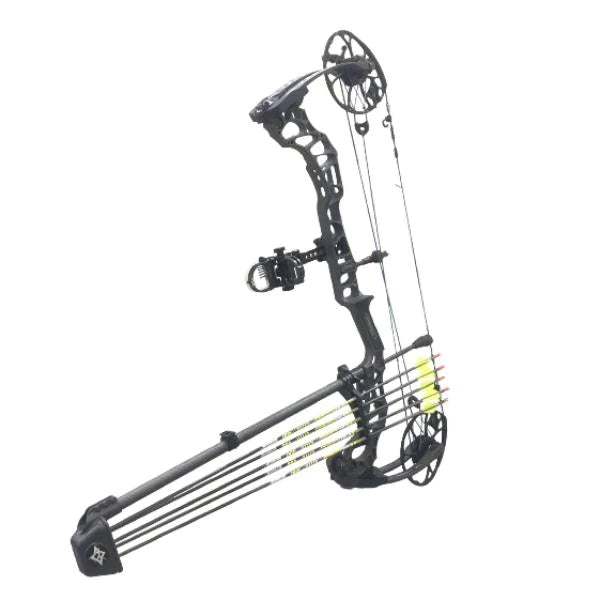Optimizing Your Archery Performance With the Right Substance Bow Stabilizer: an Extensive Introduction
In the world of archery, consistency and precision are paramount to accomplishing ideal performance. One important yet often-overlooked component in boosting precision is the substance bow stabilizer. This unassuming tool plays a substantial duty in steadying your objective, minimizing bow torque, and taking in resonances. The performance of a stabilizer pivots on various elements, consisting of design, placement, and weight. By recognizing the subtleties of selecting and optimizing a substance bow stabilizer, archers can tweak their devices to raise their shooting experience to new degrees of effectiveness and control.
Value of Bow Stabilizers in Archery

In addition, bow stabilizers help in balancing the weight circulation of the bow, which can enhance the archer's security while intending and firing. By adding weight to the front of the bow, stabilizers can decrease the quantity of torque experienced upon launch, causing a smoother and extra controlled shot - compound bow stabilizer. This weight distribution also aids in holding the bow stable for a longer period, enabling the archer to aim a lot more accurately
Kinds Of Compound Bow Stabilizers
When thinking about the different kinds of substance bow stabilizers readily available, it is crucial to comprehend their distinct attributes and features to identify the most ideal alternative for making the most of archery performance. The most common types of compound bow stabilizers consist of sidebar stabilizers, front stabilizers, and back stabilizers. Back stabilizers, additionally called back stabilizers, are installed to the back of the bow and assist in reversing the weight of other devices, resulting in improved security and steady intending.
Variables to Consider When Selecting
In examining compound bow stabilizers, comprehending the distinctive functions and features of each type is crucial for making an informed decision on one of the most suitable alternative to enhance archery efficiency. When choosing a stabilizer, one must think about the weight of the stabilizer itself. While a much heavier stabilizer can offer more stability by decreasing the bow's movement, it may additionally create exhaustion during lengthy shooting sessions. Balance is an additional important aspect to contemplate. The stabilizer's size and design significantly impact the bow's equilibrium, affecting the shooter's capacity to hold consistent goal. Additionally, the product of the stabilizer can affect its efficiency. Carbon fiber stabilizers are lightweight and soak up vibrations well, boosting precision. Additionally, the number and adjustability of dampeners on the stabilizer can adjust its performance by lowering noise and shock upon launch. By meticulously examining these variables, archers can select a substance bow stabilizer that lines up with their shooting design and maximizes their overall performance on the archery array.
Setup and Modification Tips
For optimal efficiency and precision in archery, understanding the setup and adjustment of your bow stabilizer is crucial. Appropriate installation starts with connecting the stabilizer to the bow's riser, ensuring it click reference is securely secured.
When changing the stabilizer, begin with small step-by-step changes instead of drastic modifications. This allows you to analyze the effect of each alteration accurately. Pay interest to how the bow reacts to changes in stabilizer settings and make changes accordingly. Keep in mind that the goal is to find hop over to these guys an arrangement that reduces hand torque, lowers vibration, and improves accuracy. Regularly inspect the stabilizer's rigidity and total condition to ensure it proceeds to function optimally. By grasping the installment and change procedure, you can maximize your archery performance and raise your capturing experience.
Maintenance and Care Guidelines

It is likewise crucial to keep your bow with the stabilizer in a risk-free and protected area when not being used. Prevent leaving it in severe temperatures or subjected to guide sunshine for prolonged periods, as this can trigger damages to the stabilizer. Occasionally inspect the stabilizer's positioning to ensure it is still appropriately positioned on your bow. Complying with these upkeep and treatment standards will help you get one of the most out of your bow stabilizer and enhance your overall archery performance.
Verdict
In final thought, choosing the best substance investigate this site bow stabilizer is crucial for taking full advantage of archery performance. Comprehending the significance, kinds, factors to think about, setup and change ideas, along with upkeep and treatment standards can considerably impact one's precision and uniformity in shooting. By selecting a stabilizer that fits specific requirements and choices, archers can enhance their total performance and attain far better results on the array or in competition.
Bow stabilizers play a critical duty in boosting an archer's accuracy and consistency by reducing resonances and supporting the bow during the release of an arrowhead - compound bow stabilizer.Additionally, bow stabilizers aid in stabilizing the weight circulation of the bow, which can enhance the archer's security while intending and firing. The most typical types of compound bow stabilizers consist of sidebar stabilizers, front stabilizers, and back stabilizers. Back stabilizers, also called back stabilizers, are mounted to the back of the bow and help in reversing the weight of various other devices, resulting in enhanced stability and consistent intending. When selecting a stabilizer, one should think about the weight of the stabilizer itself